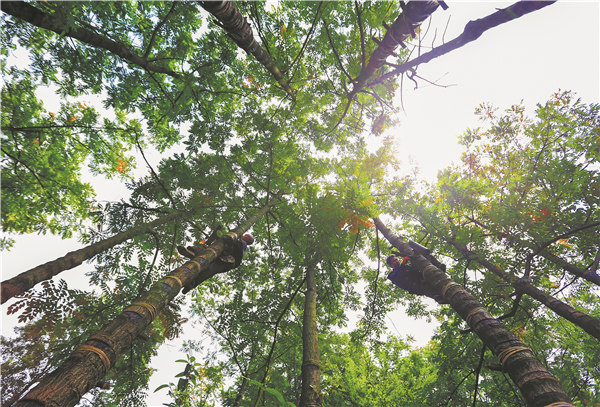

Traditional skill of lacquer tappers faces challenging times as interest saps away, report Wang Qian and Yang Jun in Guiyang.
Deep in the forests of Wumeng Mountain in Southwest China's Guizhou province, lacquer tapper Yu Zhongping climbs a tree using a hard leaf to collect the extracted viscous sap through a notch cut into the bark.
From May to September every year, Yu, 64, is busy harvesting lacquer, applied as a coating to protect and decorate a variety of everyday items, like bowls and furniture. When the lacquer hardens, it polymerizes and forms a protective surface that repels water and resists corrosion. As an art form originating from China, the amazing material is one of the earliest "plastics" used by humans.
"I still utilize the traditional way of collecting lacquer and will keep practicing it, which has become a part of my life," Yu from Cengtai town in the city of Bijie, Guizhou, says.
He adds that tapping is more than a business; it is a craft that needs to be inherited.
Several kilometers away, Yu Zhongping and his elder cousin Yu Zhongding, 73, leave home around 6 am and return at night during harvesting season. With their grandfathers being experts in the craft, they have been lacquer tappers since they were teenagers.
Before tapping, the first step is to attach climbing slings to the trunks, which takes about a month.
Tappers then gouge small diagonal grooves into the trees to build up its immunity and ensure a more milky and yellowish sap, according to Yu Zhongding. After 10 days, the initial tapping is conducted.
A tree can have 10 horizontal incisions in the bark for a harvesting season with the best quality of lacquer collected at notches from the third to the eighth, the senior tapper concludes.